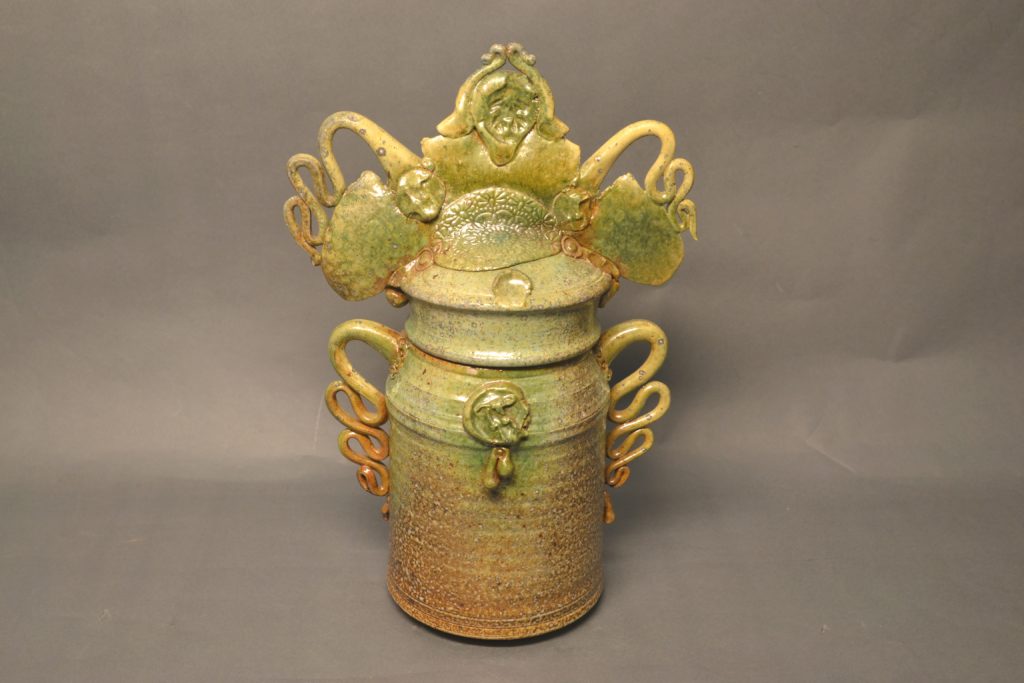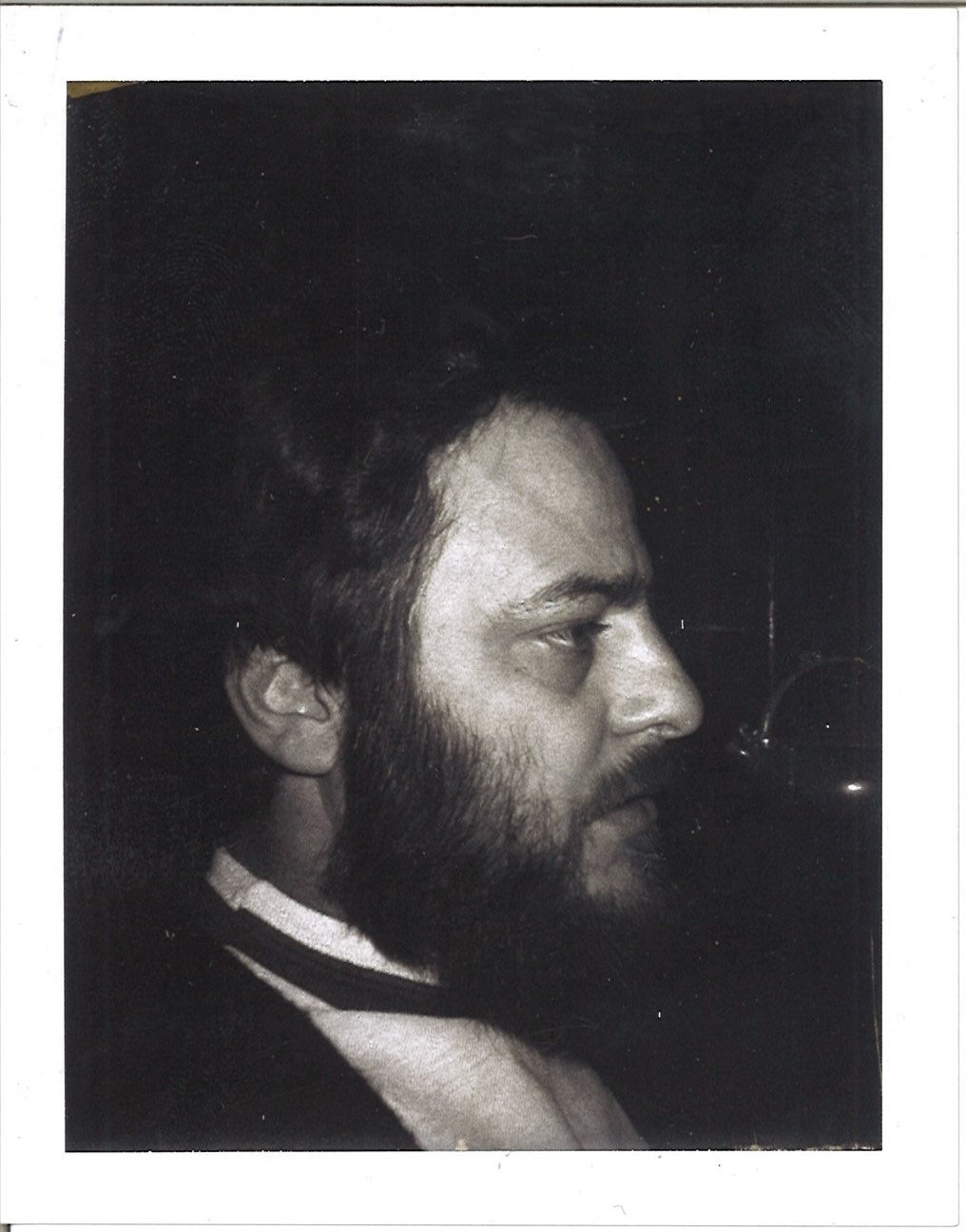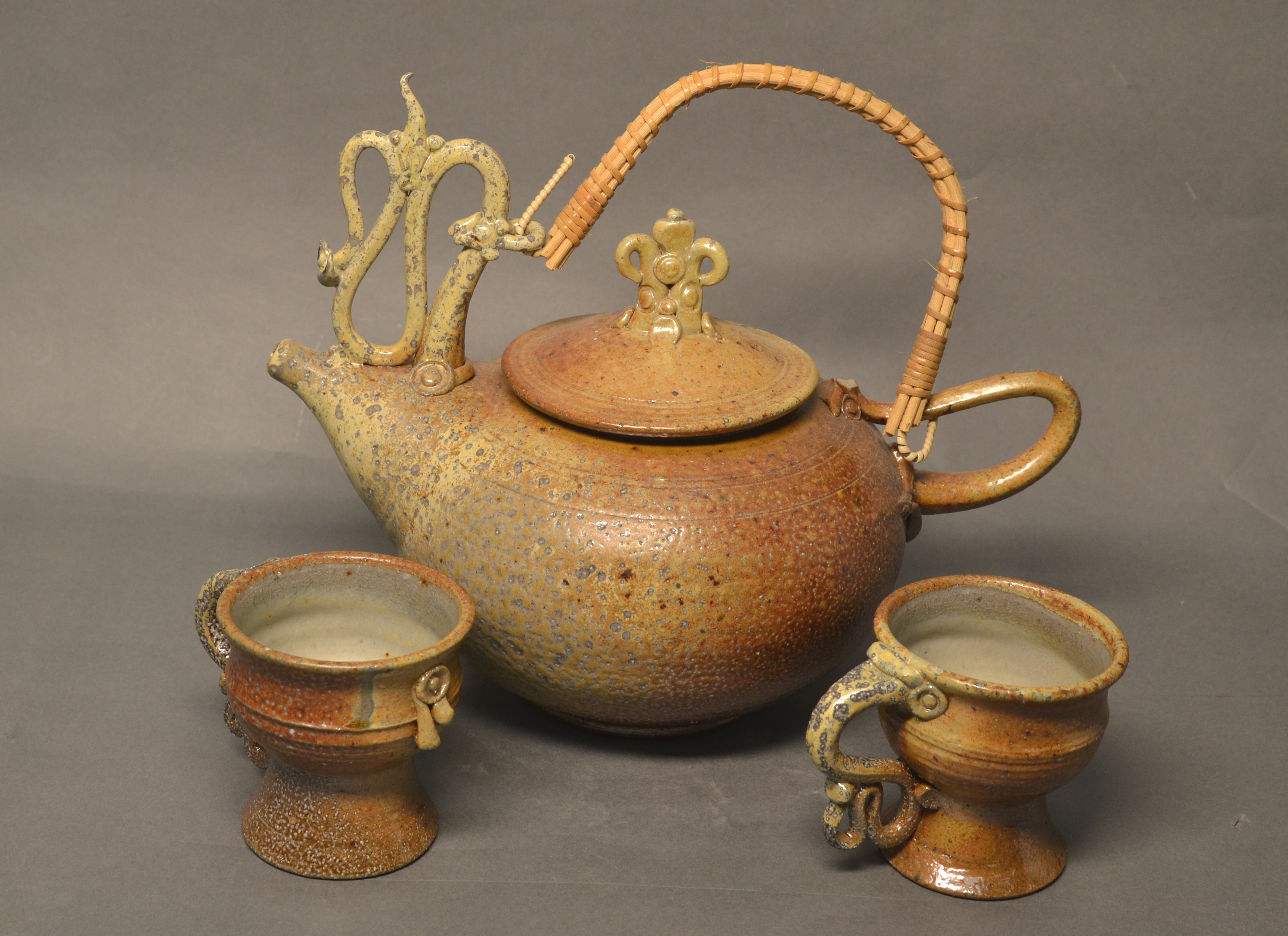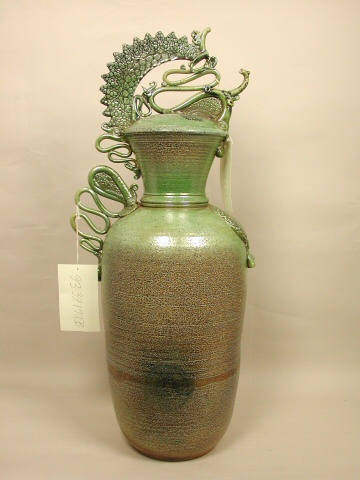James Darrow

(b. 1939) Lives and works in Knoxville, Tennessee
Green Headdress Jar, 1975
clay, salt glaze, 14.5 x 9.75 x 6.5 inches, 93.39.14ab
In the spring of 1971, under the auspices of the International Academy of Ceramics, the Tennessee Arts Commission pledged its support for the promotion and establishment of the U.S. International Ceramic Symposiums. The Symposium’s mission to help develop a worldwide network of support for ceramic art was achieved by bringing together top ceramic artists from around the world for a month-long sharing of ideas and creation of innovative ceramics.



Left: James Darrow, Center: Teapot with Cups, 1975, teapot: stoneware, 9 x 115 x 3.5 inches, cups: stoneware, 3.25 x 4.25 x 3 inches, 93.39.174ab Right: Green Salt Form, 1975 lid: stoneware, 13.5 x 11 x 3.5 inches, base: Stoneware, 21 x 13 x 4.75 inches, 93.39.171ab
Darrow represented the United States at the Second U.S. International Ceramic Symposium, which consisted of twelve artists from seven different countries, and was hosted in the summer of 1975 at the Arrowmont School of Crafts in Gatlinburg, TN. At the time of the Symposium, Darrow was an assistant ceramics professor at the University of Tennessee in Knoxville, and he was also a member of the planning committee for the Symposium. While participating, Darrow threw simplistic vessels onto which he juxtaposed elegant and intricate pulled handles and decorative slab designs, which were fired using colored slips, salt glaze, and pearl lusters. Afterwards, Darrow wrote a review of the artists and what they created at the Symposium for the magazine Ceramics Monthly, which extended the reach of the International Ceramic Symposium. In this review he writes:
“There were indeed arguments, agreements, and common bonds among the twelve participating ceramists, and by the end of the Symposium we were jointly tired, exhilarated, and a bit homesick for families and studios. […] The traditional training and working methods of the individual participants provided a common ground for the exchange of techniques and ideas, as well as the resolution of curiosity. Combined with an openness of approach, this contributed to the consensus that this Symposium was one of the most productive in the series.”[1]
Following the Symposium, Darrow continued to teach ceramics at UT Knoxville with fellow Symposium participant Sandra Blain. Subsequently, he taught for a number of years at Pellissippi State Community College in Knoxville before retiring.
[1] Darrow, James. Symposium at Arrowmont. Ceramics Monthly. March 1976
Written by Aiden Layer, TN Arts Intern

